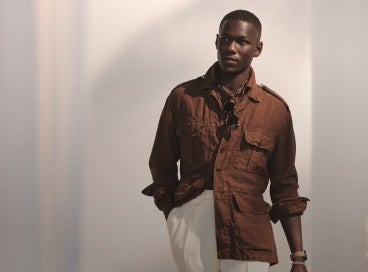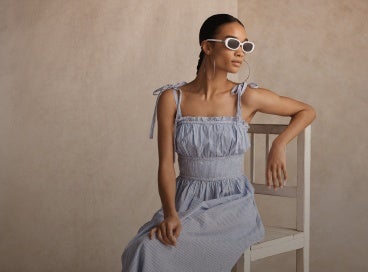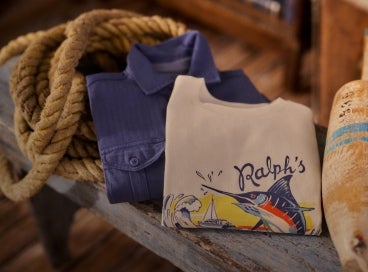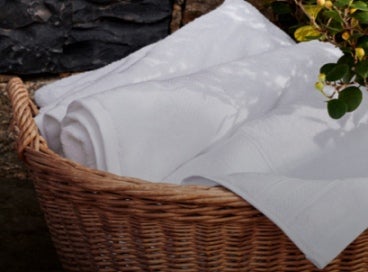
The Men's Suit Styles You Should Know And How To Wear Them
Be the best-dressed guest for any occasion with our definitive guide to the men’s suit styles to invest in now and what you should be wearing with them.
The approach of December means one thing – a packed calendar. Whether it be a work party, a winter wedding, festive cocktails or the looming spectre of New Year’s Eve, ‘tis the season for socialising and an all-out approach to evening dressing. No more “a sweater will do”. If you’ve got the occasion, dress for it.
The right suit is an essential staple of the modern gentleman's wardrobe. Whether the event calls for a two-piece suit, a tuxedo or simply ‘smart casual’, below we delve into men’s suit styling, with a look into what designs you should invest in now, different suit fabrics and their construction, and crucially what to wear with them. Read on for your definitive guide of what to wear when you need to impress.
The two-piece suit
The most common style of suit, a two-piece suit is comprised of a matching jacket and trousers. Seems simple enough, no? But to get it right, there are a few tailoring rules of how to wear a suit to take note of. Jacket sleeves, for instance, should never be worn too long – you should always be able to see the cufflinks. Trousers should sit at the hip, not lower. And jackets should sit firmly on the shoulders. To take the guesswork out of the fit, we offer a made-to-measure service for our Ralph Lauren suits. Exclusive to select stores, learn more about the bespoke service and where to find it here.
The single-breasted suit
As its name suggests, a single-breasted suit is simply a suit with a jacket that fastens with a single row of one, two, three or, occasionally, four buttons, which will most commonly fasten left over right. Single-breasted suits have less fabric than double-breasted styles which makes them a cooler option on warmer days. In addition to being one of the easiest suits styles for men to wear, a single-breasted jacket is also one of the most versatile; it can be used to smarten up jeans and a white T-shirt for after-work drinks and can even be left unbuttoned without looking untidy.
The double-breasted suit
One of the other classic men’s suit styles, a double-breasted suit jacket will have additional buttons on either side for aesthetic purposes and its front fastenings will overlap. The total number of buttons can range from four to eight, with these extra buttons putting the focal point on the sides of jacket. Creating the illusion of a wider frame, this suit style is best avoided by men with larger builds, as it can add bulk. While previously relegated to formal events, the double-breasted suit is often the first point of call for fashion-forward men. With both a vintage and elegant look, opt for a double-breasted suit in suede, jacquard or velvet to make a statement. As for the rules of buttoning a double-breasted jacket, they’re quite simple: no matter how many buttons there are, always leave the bottom button unfastened and the top buttons fastened, whether sitting or standing.
The three-piece suit
A three-piece suit consists of a matching jacket, trousers and waistcoat. Often regarded as more traditional than the standard two-piece, it is a perfect option for more formal occasions such as weddings or a day at the races. The best thing about a three-piece suit however, is its versatility. You can use each piece as a modular element in your look, which can help you achieve the perfect balance between smart and casual. Try replacing your shirt with a knitted roll neck styled with the jacket, or swap your formal shirt for a casual one (forgoing the tie) and finish with the waistcoat.
The tuxedo
If you are invited to a black-tie event, then you’re going to need a dinner suit, otherwise known as the classic tuxedo. Sharp and fitted, the traditional tuxedo comes with a single-breasted jacket with jetted pockets and typically features peak lapels or a shawl collar (notched lapels are not usually acceptable for a black-tie event), which can come in silk, satin or grosgrain. A tuxedo is appropriate for any evening function that stipulates a black-tie dress code, such as the company Christmas dinner or an evening wedding reception.
Fabrics
The feel and texture of a suit’s fabric is as important as how it looks, which is why unless you’re going to buy your suit in-store, it pays to know a little about the fabric choices before you invest. Whether you opt for wool, silk or a blend, the main considerations here are the occasion and the weather forecast. Linen and seersucker styles are synonymous with summer and are both great lightweight options for when travelling abroad – think a destination wedding – whereas cashmere, tweed or cord will keep you warm in the winter.
Footwear
As a general rule, for any kind of formal occasion, you should wear shoes that are at least as dark as your suit. This often means that black shoes are the fail-safe choice that will fit most occasions. If you are looking to add character to an otherwise simple outfit, try looking for a pair that has intricate detailing for a fancier finishing touch. A navy suit however, will pair best with a dark, rich shade of brown. Brown shoes will also go well with brown suits, but just make sure they are different shades. And is it ever appropriate to wear trainers with a suit? Yes, but in the right context. For a smart-casual affair, sleek low-top trainers will sit comfortably beneath most suit trousers.
Care
Cleaning your suit after every single wear is unnecessary and will degrade the fibres more quickly. Traditional suiting fibres – wool, mohair, cashmere – are natural yarns that are excellent at looking after themselves. That said, there are a few habits to remember in order to keep your suit in tip-top condition. After each wear, make sure to give it a quick brush down and air it out overnight before putting it back in a bag or hanging it in your closet. If your suit smells of smoke or food, hanging it outside for a couple of hours will also help to freshen it up. If you have a mishap, such as a spill or stain from food or drink, don’t panic – most marks will come out with a simple spot clean. Try using a damp cloth, or in a pinch, chemical-free baby wipes. For larger spills that need a thorough clean, stay away from the washing machine and take your suit to the dry cleaner instead. However, for both environmental and longevity reasons, we recommend dry-cleaning your suit as infrequently as you can – three or four times a year should suffice.
What about smart-casual?
One of the most anxiety-inducing dress codes to appear on an invitation, “smart casual” has always been an oxymoron. So, how should you decode this dressing conundrum? Whether it be a dinner or drinks party, a work catch-up or lunch with the in-laws, the goal here is to settle on a look that is appropriate for the upscale setting, makes you memorable for the right reasons and does not betray the fact you spent weeks deliberating. You don't have to try too hard (in this situation, a suit is too hard), but instead hit the sweet spot with a pair of tailored trousers, finished with a belt and a tucked-in crisp white T-shirt or a roll-neck jumper on colder days. Finish your look with a suede or leather jacket and polished boots for instant refinement.
















